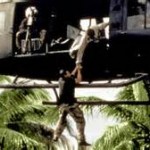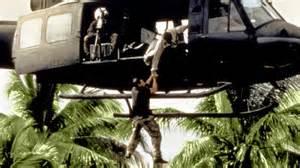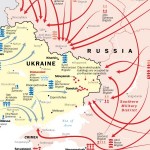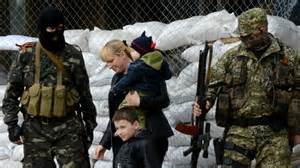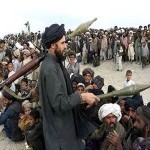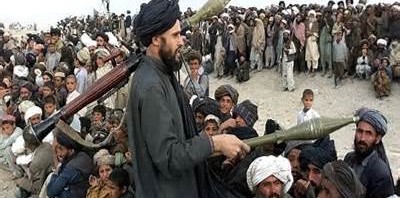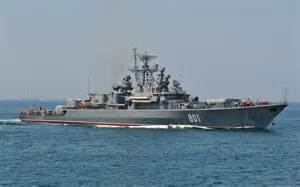Polls suggest that American is war weary and we are, but our enemy is not weary at all, so what is the solution? Diplomacy after twenty plus years in various sorts of approaches including money and political correctness has not been a viable solution even when we leave a war theater like Iraq. In fact in Iraq, we just dispatched many spies and CIA operatives there once again. So how bad is the terror report even if partially accurate? Well no better today at all while the White House tells us differently. Terror is not only in the Western Hemisphere, but attacks are growing and we cannot overlook the Homeland.
The State Department publishes a Global Terror Report from time to time and there are some omissions especially with respect to the Homeland. Terror is in America, with training camps, arms and money smuggling and governmental political collusion with Federal agencies. I read the whole report, yet to spare you, below is the State Department Summary.
Al-Qa’ida (AQ) and its affiliates and adherents worldwide continue to present a serious threat to the United States, our allies, and our interests. While the international community has severely degraded AQ’s core leadership, the terrorist threat has evolved. Leadership losses in Pakistan, coupled with weak governance and instability in the Middle East and Northwest Africa, have accelerated the decentralization of the movement and led to the affiliates in the AQ network becoming more operationally autonomous from core AQ and increasingly focused on local and regional objectives. The past several years have seen the emergence of a more aggressive set of AQ affiliates and like-minded groups, most notably in Yemen, Syria, Iraq, Northwest Africa, and Somalia.
AQ leadership experienced difficulty in maintaining cohesion within the AQ network and in communicating guidance to its affiliated groups. AQ leader Ayman al-Zawahiri was rebuffed in his attempts to mediate a dispute among AQ affiliates operating in Syria – al-Nusrah Front and al-Qa’ida in Iraq (AQI), now calling itself the Islamic State of Iraq and the Levant (ISIL) – which resulted in the expulsion of ISIL from the AQ network in February 2014. In addition, guidance issued by Zawahiri in 2013 for AQ affiliates to avoid collateral damage was routinely disobeyed, notably in attacks by AQ affiliates against civilian religious pilgrims in Iraq, hospital staff and convalescing patients in Yemen, and families at a shopping mall in Kenya.
Terrorist violence in 2013 was fueled by sectarian motivations, marking a worrisome trend, in particular in Syria, Lebanon, and Pakistan, where victims of violence were primarily among the civilian populations. Thousands of extremist fighters entered Syria during the year, among those a large percentage reportedly motivated by a sectarian view of the conflict and a desire to protect the Sunni Muslim community from the Alawite-dominant Asad regime. On the other side of the conflict, Iran, Hizballah, and other Shia militia continued to provide critical support to the Asad regime, dramatically bolstering its capabilities and exacerbating the situation. Many of these fighters are also motivated by a sectarian view of the conflict and a desire to protect the Shia Muslim community from Sunni extremists.
The relationship between the AQ core and its affiliates plays out in the financial arena as well. As was the case for the last few years, the affiliates have increased their financial independence through kidnapping for ransom operations and other criminal activities such as extortion and credit card fraud. Al-Qa’ida in the Arabian Peninsula (AQAP) and al-Qa’ida in the Islamic Maghreb (AQIM) are particularly effective with kidnapping for ransom and are using ransom money to fund the range of their activities. Kidnapping targets are usually Western citizens from governments or third parties that have established a pattern of paying ransom for the release of individuals in custody.
Private donations from the Gulf also remained a major source of funding for Sunni terrorist groups, particularly for those operating in Syria.
In 2013, violent extremists increased their use of new media platforms and social media, with mixed results. Social media platforms allowed violent extremist groups to circulate messages more quickly, but confusion and contradictions among the various voices within the movement are growing more common. Increasingly, current and former violent extremists are engaging online with a variety of views on tactics and strategy, including admitting wrongdoing or recanting former beliefs and actions.
|
Key Terrorism Trends in 2013
–The terrorist threat continued to evolve rapidly in 2013, with an increasing number of groups around the world – including both AQ affiliates and other terrorist organizations – posing a threat to the United States, our allies, and our interests.
–As a result of both ongoing worldwide efforts against the organization and senior leadership losses, AQ core’s leadership has been degraded, limiting its ability to conduct attacks and direct its followers. Subsequently, 2013 saw the rise of increasingly aggressive and autonomous AQ affiliates and like-minded groups in the Middle East and Africa who took advantage of the weak governance and instability in the region to broaden and deepen their operations.
–AQ leader Ayman al-Zawahiri experienced difficulty in maintaining influence throughout the AQ organization and was rebuffed in his attempts to mediate a dispute among AQ affiliates operating in Syria, with ISIL publicly dissociating its group from AQ. Guidance issued by Zawahiri in 2013 for AQ affiliates to avoid collateral damage was routinely disobeyed, notably in increasingly violent attacks by these affiliates against civilian populations.
–Syria continued to be a major battleground for terrorism on both sides of the conflict and remains a key area of longer-term concern. Thousands of foreign fighters traveled to Syria to join the fight against the Asad regime – with some joining violent extremist groups – while Iran, Hizballah, and other Shia militias provided a broad range of critical support to the regime. The Syrian conflict also empowered ISIL to expand its cross-border operations in Syria, and dramatically increase attacks against Iraqi civilians and government targets in 2013.
–Terrorist violence in 2013 was increasingly fueled by sectarian motives, marking a worrisome trend, particularly in Syria, but also in Lebanon and Pakistan.
–Terrorist groups engaged in a range of criminal activity to raise needed funds, with kidnapping for ransom remaining the most frequent and profitable source of illicit financing. Private donations from the Gulf also remained a major source of funding for Sunni terrorist groups, particularly for those operating in Syria.
–“Lone offender” violent extremists also continued to pose a serious threat, as illustrated by the April 15, 2013, attacks near the Boston Marathon finish line, which killed three and injured approximately 264 others.
–Many other terrorist groups not tied to AQ were responsible for attacks in 2013, including the People’s Liberation Party/Front (DHKP/C), which carried out a number of high-profile attacks last year, including a February 1 suicide plot targeting the U.S. Embassy in Ankara, Turkey. |
* * *
While AQ core leadership in Pakistan is much diminished, Ayman al-Zawahiri remains the recognized ideological leader of a jihadist movement that includes AQ-affiliated and allied groups worldwide. Along with AQ, the Afghan Taliban, the Haqqani Network, Tehrik-e Taliban Pakistan (TTP), and other like-minded groups continue to conduct operations against U.S., Coalition, Afghan, and Pakistani interests from safe havens on both sides of the Afghanistan/Pakistan border, and in Pakistan, terrorist groups and AQ allies, such as TTP, have executed armed assaults not only on police stations, judicial centers, border posts, and military convoys, but also on polio vaccination teams and aid workers. Other South Asian terrorist organizations, including Lashkar e-Tayyiba (LeT), cite U.S. interests as legitimate targets for attacks. LeT, the group responsible for the 2008 Mumbai attacks, continues to pose a threat to regional stability.
AQAP carried out approximately one hundred attacks throughout Yemen in 2013, including suicide bombings, car bombings, ambushes, kidnappings, and targeted assassinations, regaining the initiative it had lost through 2012 as a result of sustained Yemeni government counterterrorism efforts. Of the AQ affiliates, AQAP continues to pose the most significant threat to the United States and U.S. citizens and interests in Yemen. AQAP has demonstrated a persistent intent to strike the United States, beginning in December 2009 when it attempted to destroy an airliner bound for Detroit, and again the following year with a plot to destroy several U.S.-bound airplanes using bombs timed to detonate in the cargo holds. In 2013, AQAP’s leader, Nasir Wahishi, was designated by AQ leader Zawahiri as his deputy, and the group continued to maintain a focus on Western targets.
Some of the thousands of fighters from around the world who are traveling to Syria to do battle against the Asad regime – particularly from the Middle East and North Africa, Central Asia, and Eastern and Western Europe – are joining violent extremist groups, including al-Nusrah Front and ISIL. A number of key partner governments are becoming increasingly concerned that individuals with violent extremist ties and battlefield experience will return to their home countries or elsewhere to commit terrorist acts. The scale of this problem has raised a concern about the creation of a new generation of globally-committed terrorists, similar to what resulted from the influx of violent extremists to Afghanistan in the 1980s.
The violence and disorder in Syria extended to the various violent extremist groups operating amongst the Syrian opposition. In late 2013 and early 2014, violent infighting occurred between al-Nusrah Front and ISIL, resulting in the February death of Ayman al-Zawahiri’s envoy to Syria Abu Khalid
al-Soury, who was a member of Ahrar al Sham. Despite this infighting, ISIL is the strongest it has been since its peak in 2006; it has exploited political grievance among Iraq’s Sunni population, a weak security environment in Iraq, and the conflict in Syria to significantly increase the pace and complexity of its attacks. ISIL continues to routinely and indiscriminately target defenseless innocents, including religious pilgrims, and engages in violent repression of local inhabitants.
In 2013, AQIM remained focused on local and regional attack planning, and concentrates its efforts largely on kidnapping-for-ransom operations. While a successful French and African intervention countered efforts to overrun northern Mali by AQIM and several associate groups, these factions continued to pursue attacks against regional security forces, local government targets, and westerners in northern Mali, Niger, and the broader Sahel region in 2013.
Originally part of AQIM, the al-Mulathamun Battalion (AMB), also known as al-Murabitoun, became a separate organization in late 2012 after its leader, Mokhtar Belmokhtar, announced a split from AQIM. AMB claimed responsibility for the January 2013 attack against the Tiguentourine gas facility near In Amenas, in southeastern Algeria. Over 800 people were taken hostage during the four-day siege, which led to the deaths of 39 civilians, including three U.S. citizens. AMB was also involved in terrorist attacks committed in Niger in May 2013, targeting a Nigerien military base and a French uranium mine.
Groups calling themselves Ansar al-Shari’a in Tunisia and the Libyan cities of Benghazi and Darnah also operated in the North Africa space. The three share some aspects of AQ ideology, but are not formal affiliates and generally maintain a local focus. In Libya, the terrorist threat to Western and Libyan government interests remains strong, especially in the eastern part of the country. Libya’s porous borders, the weakness of Libya’s nascent security institutions, and large amounts of loose small arms create opportunities for violent extremists. In Tunisia, Ansar al-Shari’a in Tunisia attempted suicide attacks against two tourist sites in late October 2013 and killed a political oppositionist in July that same year, suggesting the group remains intent on attacking Western and Tunisian interests.
In East Africa, al-Shabaab continued to pose a significant regional threat despite coming under continued pressure by African forces operating under the African Union’s AMISOM command and steady progress in the establishment of Somali government capability. Perhaps because of these positive steps, al-Shabaab targeted its attacks on those participating in the effort to bring stability to Somalia. In September 2013, al-Shabaab struck outside of Somalia (its first external attack was in July 2010 in Kampala, Uganda), attacking the Westgate Mall in Nairobi, Kenya. The assault resulted in the death of at least 65 civilians, including foreign nationals from 13 countries outside of Kenya and six soldiers and police officers; hundreds more were injured. Al-Shabaab’s attacks within Somalia continued in 2013, and resulted in the deaths of hundreds of people, including innocent women and children.
Boko Haram (BH) maintained a high operational tempo in 2013 and carried out kidnappings, killings, bombings, and attacks on civilian and military targets in northern Nigeria, resulting in numerous deaths, injuries, and destruction of property in 2013. The number and sophistication of BH’s attacks are concerning, and while the group focuses principally on local Nigerian issues and actors, there continue to be reports that it has financial and training links with other violent extremists in the Sahel region. Boko Haram, along with a splinter group commonly known as Ansaru, has also increasingly crossed Nigerian borders to neighboring Cameroon, Chad, and Niger to evade pressure and conduct operations.
Palestinian terrorist organizations in the Hamas-controlled Gaza continued rocket and mortar attacks into Israeli territory. The number of rocket and mortar launchings on Israel from Gaza and the Sinai was the lowest in 2013 in more than a decade, with 74 launchings compared to 2,557 in 2012. According to Israeli authorities, 36 rocket hits were identified in Israeli territory in 2013, compared to 1,632 in 2012. Of the 74 launchings on southern Israel, 69 were launched from the Gaza and five from the Sinai Peninsula.
Sinai-based groups, such as Ansar-Beit al Maqdis, also continued to pose a serious threat, conducting attacks against both Israeli and Egyptian targets in 2013.
Since 2012, the United States has also seen a resurgence of activity by Iran’s Islamic Revolutionary Guard Corps’ Qods Force (IRGC-QF), the Iranian Ministry of Intelligence and Security (MOIS), and Tehran’s ally Hizballah. On January 23, 2013, the Yemeni Coast Guard interdicted an Iranian dhow carrying weapons and explosives likely destined for Houthi rebels. On February 5, 2013, the Bulgarian government publicly implicated Hizballah in the July 2012 Burgas bombing that killed five Israelis and one Bulgarian citizen, and injured 32 others. On March 21, 2013, a Cyprus court found a Hizballah operative guilty of charges stemming from his surveillance activities of Israeli tourist targets in 2012. On September 18, 2013, Thailand convicted Atris Hussein, a Hizballah operative detained by Thai authorities in January 2012. On December 30, 2013, the Bahraini Coast Guard interdicted a speedboat attempting to smuggle arms and Iranian explosives likely destined for armed Shia opposition groups in Bahrain. During an interrogation, the suspects admitted to receiving paramilitary training in Iran.
On June 22, 2013, the Gulf Cooperation Council (GCC) declared it would treat Hizballah as a terrorist organization. On July 22, 2013, the EU designated the “military wing” of Hizballah as a terrorist organization, sending a strong message to Hizballah that it cannot operate with impunity. Both Hizballah and Iran issued public statements to denounce the EU, demonstrating the impact of the designation. The EU designation will constrain Hizballah’s ability to operate freely in Europe by enabling European law enforcement agencies to crack down on Hizballah’s fundraising, logistical activity, and terrorist plotting on European soil.
Iran remained one of the chief external supporters of the Asad regime in Syria and continued to help ensure the regime’s survival. The IRGC-QF, Hizballah, and Iraqi Shia terrorist groups have all increased the number of their personnel in Syria since the start of the conflict. Iran also continued to send arms to Syria, often through Iraqi airspace, in violation of the UN Security Council prohibition against Iran selling or transferring arms and related materials.
While terrorism by non-state actors related to AQ and state-sponsored terrorism originating in Iran remained the predominant concern of the United States, other forms of terrorism undermined peace and security around the world. In Turkey, the DHKP/C was responsible for a number of high-profile attacks in 2013, including exploding a suicide vest inside the employee entrance to the U.S. Embassy in Ankara on February 1. Anarchists in Greece launched periodic attacks, targeting private businesses, foreign missions, and symbols of the state. In Colombia, there were still hundreds of terrorist incidents around the country. In Northern Ireland, dissident Republican groups continued their campaigns of violence. “Lone offender” violent extremists also remain a concern, as we saw on April 15, 2013, in the United States, when two violent extremists exploded two pressure cooker bombs near the Boston Marathon’s finish line, killing three people and injuring an estimated 264 others.
* * *
To meet the challenges described herein, our response to terrorism cannot depend on military or law enforcement alone. We are committed to a whole of government counterterrorism effort that focuses on countering violent extremism; building the capacity of partner nation security forces to address threats within their own borders and participate in regional counterterrorism operations; and strengthening relationships with U.S. partners around the world to make the rule of law a critical part of a broader, more comprehensive counterterrorism enterprise. See Chapter 5, Terrorist Safe Havens (7120 Report) in this report for further information on these initiatives, which also include designating foreign terrorist organizations and individuals, countering violent extremist narratives, strengthening efforts to counter the financing of terrorism, and furthering multilateral initiatives such as the Global Counterterrorism Forum.

